PVC apron for the kitchen: features and interesting examples
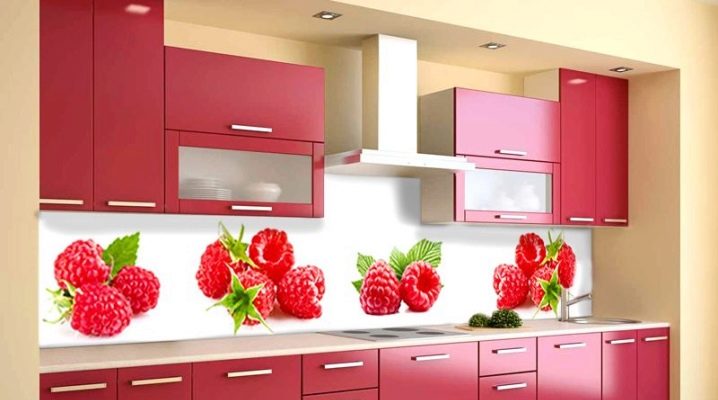
The convenience of servicing the kitchen and its appearance depend on the material and decor of the kitchen apron. The space above the countertop can be laid out with ceramic tiles, but this is expensive, and the installation itself requires certain tile laying skills. If you use PVC for decoration and protection of the wall from kitchen contamination, the result may be no worse, and the material costs and installation efforts are much less.
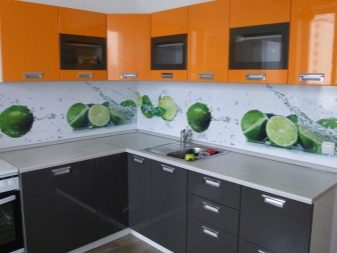

What is PVC?
PVC is a shortened name for polyvinyl chloride. A wide variety of finishing materials are made from this substance, which looks like a powder.
The composition of PVC panels includes:
- hydrogen;
- carbon;
- ethylene;
- chlorine;
- stabilizing substances;
- dyes;
- components that protect against ultraviolet radiation.
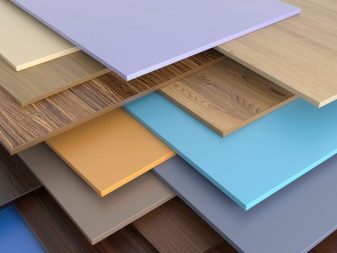
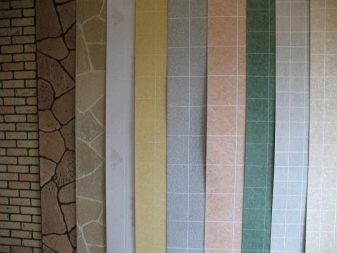
Advantages and disadvantages
The PVC apron has a lot of advantages:
- it is lightweight and durable;
- allows you to hide wall defects;
- protects it from greasy stains and moisture when cooking, and also makes it easy to remove dirt from its surface;
- the seams between the individual parts of the structure are almost invisible, kitchen dirt does not clog in them;
- the coating is resistant to mechanical stress, capable of withstanding not too strong impacts without damage;
- absorbs sounds well;
- there are a lot of decorative solutions using PVC in the kitchen, which makes it possible to arrange it in any style;
- for the installation of PVC in the form of an apron, special preliminary work is often not required;
- the installation itself is quick and easy;
- individual structural elements are easy to replace with new ones;
- PVC is safe from an environmental point of view, so its use in the kitchen is quite appropriate;
- PVC prices are low, so you can even arrange an apron for the kitchen from such panels with a small budget.
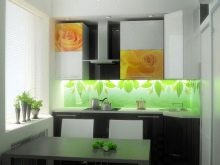
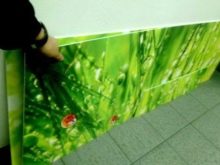
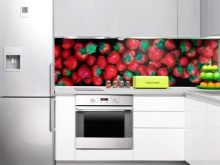
Along with the many advantages of PVC kitchen aprons, they also have their disadvantages:
- brushes are not suitable for cleaning such surfaces, since traces remain on the cladding that cannot be eliminated;
- from a strong impact, the panel may break or get a dent;
- near the stove, you will have to use not PVC, but another material that is more resistant to high temperatures;
- when PVC is heated, it emits harmful substances, so it must be kept away from sources of fire and heat;
- panels made of such material can deform due to temperature changes.
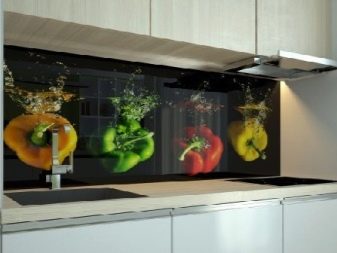
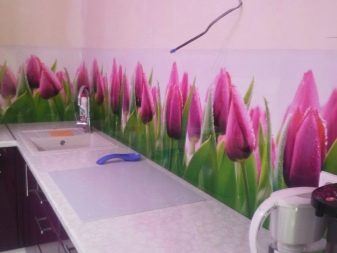
Varieties of material
From polyvinyl chloride, you can create finishing materials of any shape and different appearance:
- in the form of a lining board;
- square;
- leafy;
- in one color;

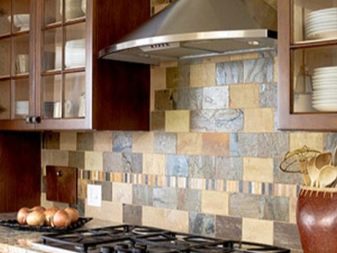

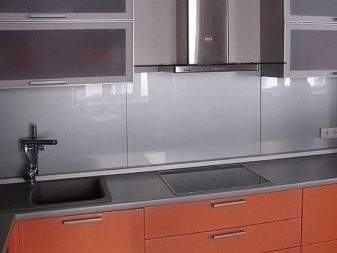
- with thermal or offset printing;
- covered with laminate;
- varnished;
- having a frieze.

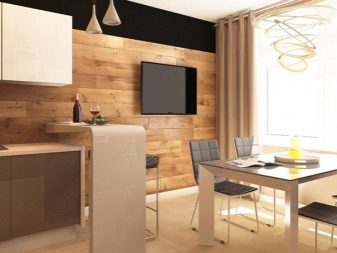
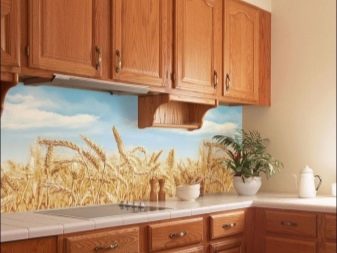
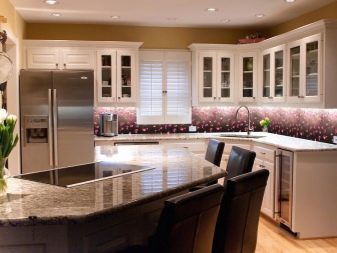
If the apron is to be a plain covering, it is convenient to use the lining. The slats are 10 by 300 centimeters in size. This allows you to quickly decorate the wall with them.
In some cases, it will be more convenient to take panels for work. The common width of such products is 25 centimeters with a three-meter length, although there are other options. During installation, the seams between the panels are practically invisible. If you use sheets with a width of 80 to 200 centimeters with a length of 150 to 405, you can get a flat surface that gives the impression of a single canvas.

As for the decorative possibilities of PVC for the kitchen, they are unusually wide. You can choose slabs not only in one color, but also with drawings that make up whole pictures.Images are applied to PVC using photo printing, for this they use thermal film.
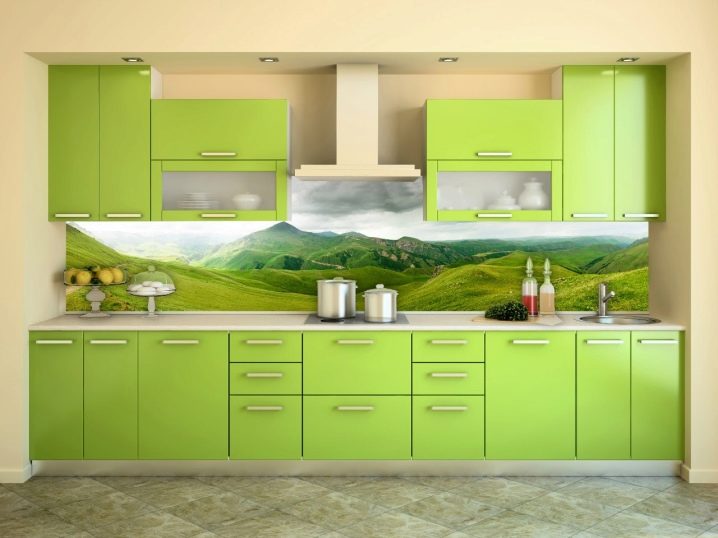
You can choose decor in country style, Provence or any other. Many images are aimed at whetting the appetite.
With this or that apron pattern, you can achieve a specific effect in the perception of the kitchen space, make it a highlight of the entire interior of the apartment.
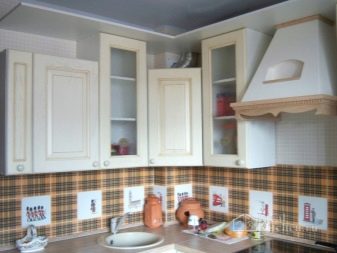
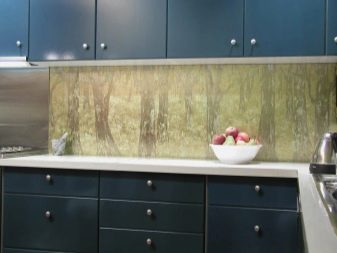
Selection recommendations
Materials for the apron are recommended to be selected and purchased after the completion of the repair and installation of the kitchen unit. This will help to avoid stylistic contradictions between furniture and such an important functional and decorative element as an apron.
A variety of textures and colors opens up a lot of scope for choosing one or another PVC option for the kitchen. Panels and sheets for the texture of wood or stone are in demand. You can find PVC in any shade that matches the color of the kitchen set.
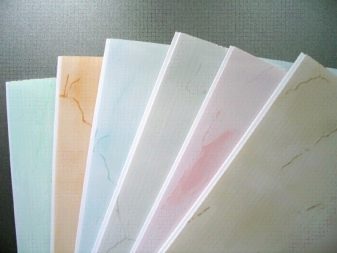

Much depends on the layout, as well as on the area of the kitchen. For a large kitchen, color-rich PVC panels are suitable. For the kitchen of a small kitchen, it is best to choose light materials that can visually increase the space.
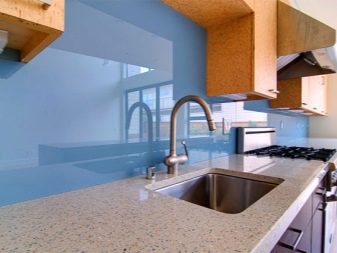

You also need to keep in mind the geometric features of PVC. During installation, the apron must completely fence off the real wall of the room from moisture and possible contamination. The PVC apron should go under the wall cabinets and reach the level of the table top. Therefore, you need to immediately decide on which panel configuration to choose, so that it is easier to mount them and less money to purchase.
At the edges, PVC panels are protected with a special border. This gives the structure a completeness and does not allow moisture and other "consequences" of cooking to penetrate inside. You also need to attend to its purchase right away.
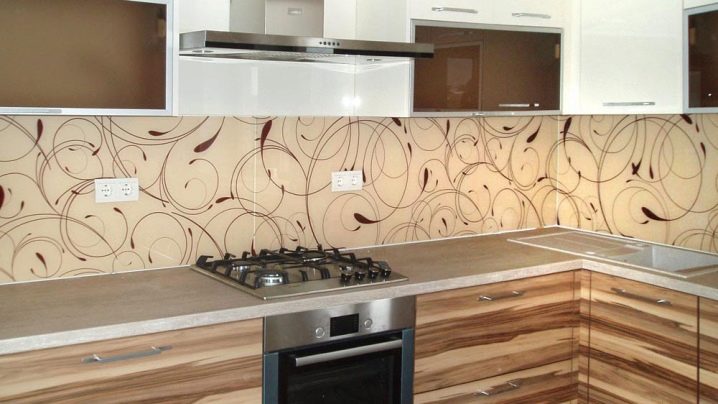
The subtleties of styling
For the panel apron device can be fixed in various ways:
- self-tapping screws;
- stapler;
- on the glue.
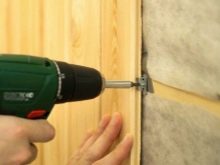

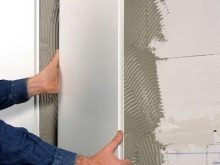
Attaching PVC to self-tapping screws is a very reliable way of fastening. It has only one drawback - the hats from the fasteners will be visible, so that they are not conspicuous, special plugs are used. To keep the apron neat, markings should be made on the panels. So the screws will be located at the same distance from each other, and there will be no feeling of chaos from their flickering before the eyes. When installing, it is better to work together: one person should hold the panel, and the other should make holes in the PVC and the wall, fix them with a screwdriver or screwdriver.
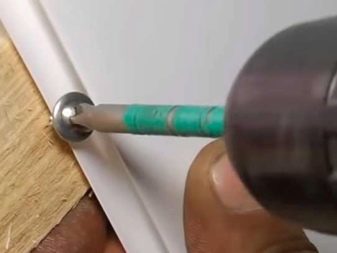
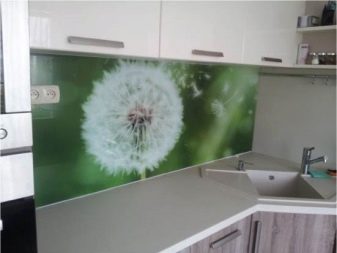
If the wall is very uneven, you can first attach wooden blocks to it, the distance between which coincides with the width of the PVC panels, and only then mount the apron.
If a special glue such as "liquid nails" is used, it is better to putty and prime the wall first. Liquid nails are applied to the back of the panel and pressed against the wall. It only takes a few minutes to press down. Since the material is lightweight, this is quite enough so that it grabs and does not peel off from the place designated for it. This mounting method has a downside - it will not be easy to remove the panel from the wall when dismantling.
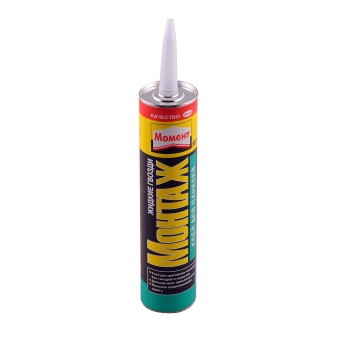
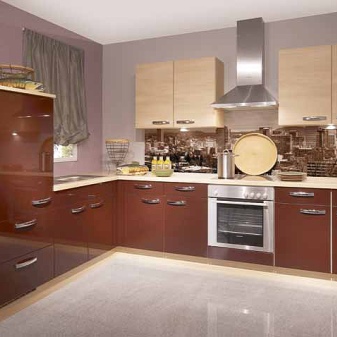
The stapler can be used if the wall behind the apron is wooden. It allows the staples to penetrate easily. They fix the apron around the entire perimeter of the styling. Before you take up the stapler, you need to make the markings.
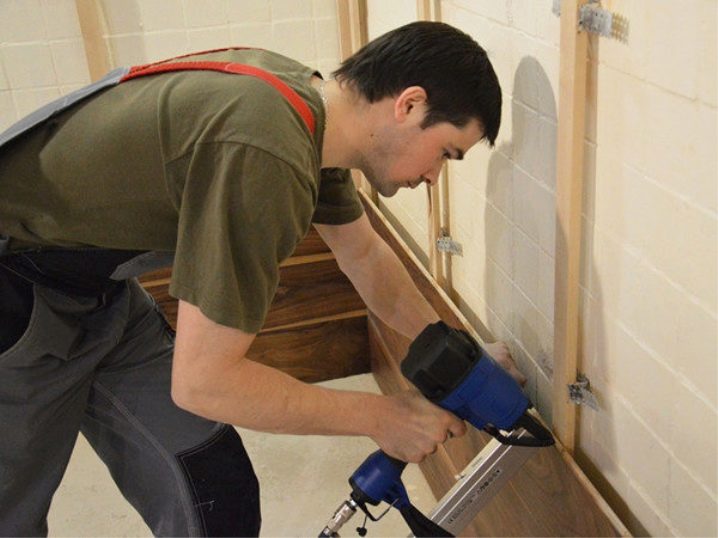
Design examples
PVC panels allow you to be creative when installing a backsplash for your kitchen. For example, in a bright room decorated in discreet gray tones with a strict white kitchen set, a bright strip of poppies on the protective wall covering between the upper and lower tiers of furniture will have to be in place.
The severity of the light kitchen set with its well-defined lines will emphasize the apron with the image of coffee beans. This drawing also resonates well with the unusual color of the walls and floor of the room, creating a harmonious whole picture of the space.
To create a certain design effect, you can use panels on which an interesting drawing in Japanese style is captured. Such a kitchen will certainly not be perceived as standard.
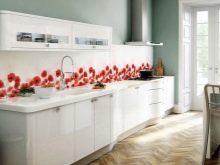

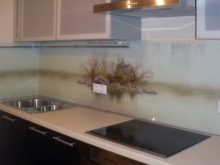
Using red for a kitchen backsplash is very demanding. But it kindles appetite with its appearance, and against the background of a light headset in a well-lit room it looks advantageous. More suitable for active, cheerful owners.
On sale you can find panels that, in shade and pattern, match the color of the headset itself and perfectly complement it, giving brightness and originality to the entire kitchen space.
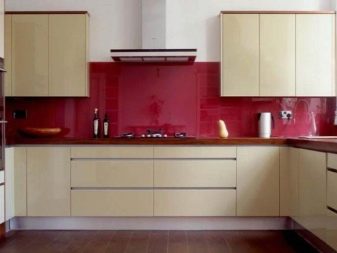
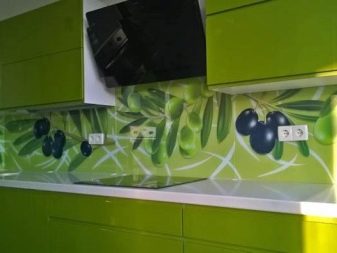
The use of the image of the night city on the apron visually pushes the boundaries of the room. From a distance, it seems that there is a narrow long window between the upper and lower tiers of furniture. This makes the kitchen look modern and bright. It is good when, in terms of colors, such a “city” complements the headset itself, without conflicting with it.
Fans of restraint in the design of the kitchen can use discreet PVC panels that match in color with a certain part of the kitchen set. The image of medium-sized flowers will make the apron not boring. At the same time, this pattern will complement the bright part of the furniture set.
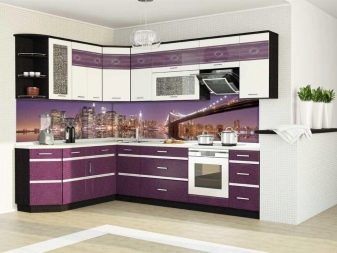
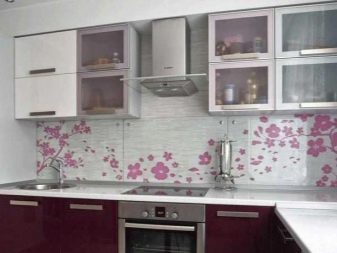
For a modern, spacious kitchen with stylish black furniture, an apron with a picture of a cherry or a cherry tree is suitable. If these color spots overlap with other interior details, the kitchen will become a source of pride for its owner.

A real still life of a variety of vegetables is the best fit for decorating a kitchen apron. The orange kitchen with drawings with matching peppers looks very elegant and makes you want to cook a culinary masterpiece.
In some interiors of kitchens, patterns of aprons like brickwork look harmonious. This may be appropriate if not only the room in which the food is prepared, but the whole apartment is decorated in a loft style. Although even a standard kitchen set in brown tones is combined with a brick-type decor quite adequately.

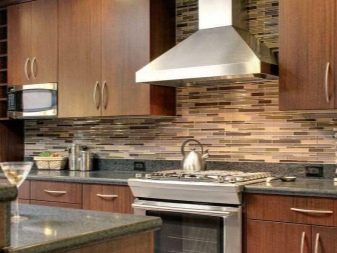
From the video below you can find out how to lay an apron in the kitchen in 10 minutes.













The comment was sent successfully.